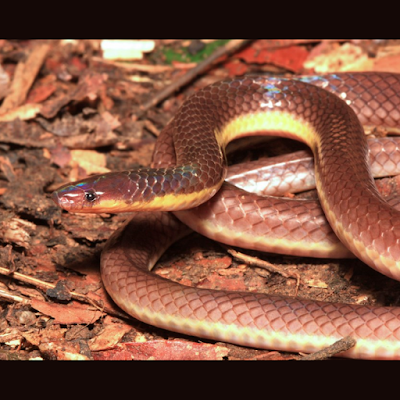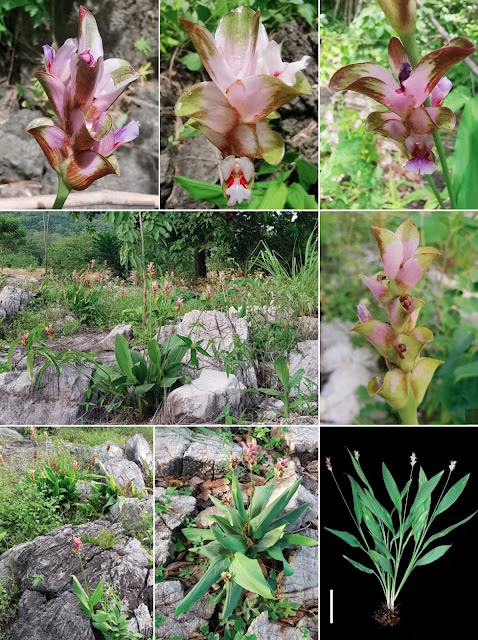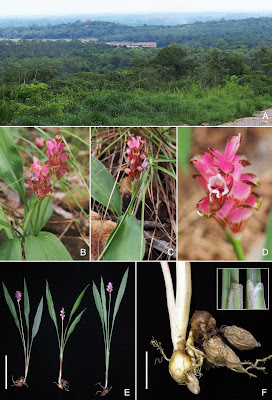[Most Recent Entries] [Calendar View]
Monday, February 8th, 2021
| Time | Event | ||
| 10:45a | [Herpetology • 2021] Calamaria alcalai • A New Species of Reed Snake, Genus Calamaria (Colubridae: Calamariinae), from Mindoro Island, Philippines
Abstract We describe a new species of reed snake of the genus Calamaria Boie 1827, from Mindoro Island, Philippines. The new species differs from all other species of Calamaria by having the following combination of characters: a high number of subcaudal scale pairs (> 40 in males, > 30 females) and ventrals + subcaudals (> 205 in males, > 210 in females); mental scale not contacting chin shields; dorsal surface of head, body, and tail uniformly dark brown; and ventral surface of body (extending to include part or all of first longitudinal row of dorsals) uniformly pale (yellow or white in life). The new species is likely most closely related to Calamaria schlegeli Duméril, Bibron, and Duméril 1854, which also has a high number of subcaudal scales compared to other Calamaria species. The new species is the second Calamaria species known from Mindoro Island and the eighth known from the Philippines, and its presumed distant relationship from other Philippine Calamaria suggests an additional colonization of the Philippines by this genus from continental Asia. Keywords: biodiversity, biogeography, Calamaria alcalai new species, Serpentes, Squamata, systematics Diagnosis: The new species differs from all other southeast Asian species by having the following combination of characters: prefrontal scales large, bordering rostral scale; internasal scales absent; 13 longitudinal rows of dorsal scales throughout length of body; subcaudal scales > 30 pairs (females), > 40 pairs (males); mental scale not in contact with chin shields; preocular scale present; prefrontal scale not in contact with eye. Color pattern in life: dorsal surface of head, body, and tail maroon or light maroon; ventral surface of head and anterior of body yellow; ventral surface of posterior of body and tail pale cream; boundary between dorsal and ventral body coloration on first longitudinal row of dorsal scales light yellow to cream. Color pattern in ethanol: dorsal surface of head, body, and tail uniformly dark brown; ventral surface of head, body, and tail pale yellow or cream. Etymology: The species epithet alcalai is a patronym in the genitive singular, honoring Dr. Angel C. Alcala, for his numerous contributions on the systematics, biogeography, and ecology of amphibians and reptiles of the Philippines—and, in general, for his influential promotion of conservation and sustainable management of the archipelago’s terrestrial and marine biodiversity. Jeffrey L. Weinell, Alan E. Leviton And Rafe M. Brown. 2021. A New Species of Reed Snake, Genus Calamaria (Colubridae: Calamariinae), from Mindoro Island, Philippines. Philippine Journal of Systematic Biology. 14(2). DOI 10.26757/pjsb2020b14006. | ||
| 4:22p | [Botany • 2021] Curcuma lithophila & C. rufostriata (Zingiberaceae) • Two New Species from Thailand, and Additional Notes on C. papilionacea
ABSTRACT Curcuma lithophila and C. rufostriata, two new species from Curcuma subgen. Hitcheniopsis, are described and illustrated. They are compared with their morphologically closest species, Curcuma rhabdota, C. papilionacea and C. sparganiifolia. Notes on distribution, ecology, etymology, uses and IUCN provisional assessments are provided. Further notes on the distribution of the recently described C. papilionacea and an improved IUCN conservation assessment are reported from additional collections. Keywords: Curcuma rhabdota, Curcuma papilionacea, Curcuma subgen. Hitcheniopsis Curcuma lithophila Škorničk. & Soonthornk., sp. nov. (subgen. Hitcheniopsis) Similar to Curcuma rhabdota Sirirugsa & M.F.Newman in overall habit, colour of the flowers,and spurless anther but differs in the lack of comabracts, bracts without prominent red-brown striation,and lateral staminodes broadly obovate and broaderthan the labellum (versus prominent coma bracts, bracts with prominent striation and lateral staminodeselliptic and much narrower than the labellum in C. rhabdota). Type: Thailand. Kanchanaburi Province, Sai Yok District, Lum Sum Subdistrict, alt. 214 m, 19 Aug. 2020, Puangpairote TP-1150 (holotype BKF!;isotypes E!, PSU!, QBG!, SING!). Figs. 1 & 2. Etymology.— Greek, litho-, stone and -philus, loving; referring to the rocky habitat preferred by this species. Curcuma rufostriata Škorničk. & Soonthornk., sp. nov. (subgen. Hitcheniopsis) Similar to Curcuma rhabdota Sirirugsa & M.F.Newman in fertile bracts with reddish brown striation and pink spots on each side of the apex, and overall shape and colour of the flowers, but differs in the lack of coma bracts, L-shaped anther with prominent anther spurs and coriaceous laminae without prominent plication (versus prominent coma bracts, spurless anthers and non-coriaceous plicate laminae in C. rhabdota). Type: Thailand. Prachinburi Province, Mueang District, Noen Hom Subdistrict, alt. 126 m, 11 June 2020, Soonthornkalump Sutt-216 (holotype BKF!; isotypes BK!, E!, K!, P!, PSU!, QBG!, SING!). Etymology.— Latin, rufus-, reddish brown and -striatus, striate; referring to the linear markings on the fertile bracts. Sutthinut Soonthornkalump, Tidarat Pungpairote, Sira Niwesrat and Jana Skornickova. 2021. Curcuma lithophila and C. rufostriata (Zingiberaceae), Two New Species from Thailand, and Additional Notes on C. papilionacea. Thai Forest Bulletin (Botany). 49(1); 32-43. DOI: 10.20531/tfb.2021.49.1.03 |
| << Previous Day |
2021/02/08 [Calendar] |
Next Day >> |












